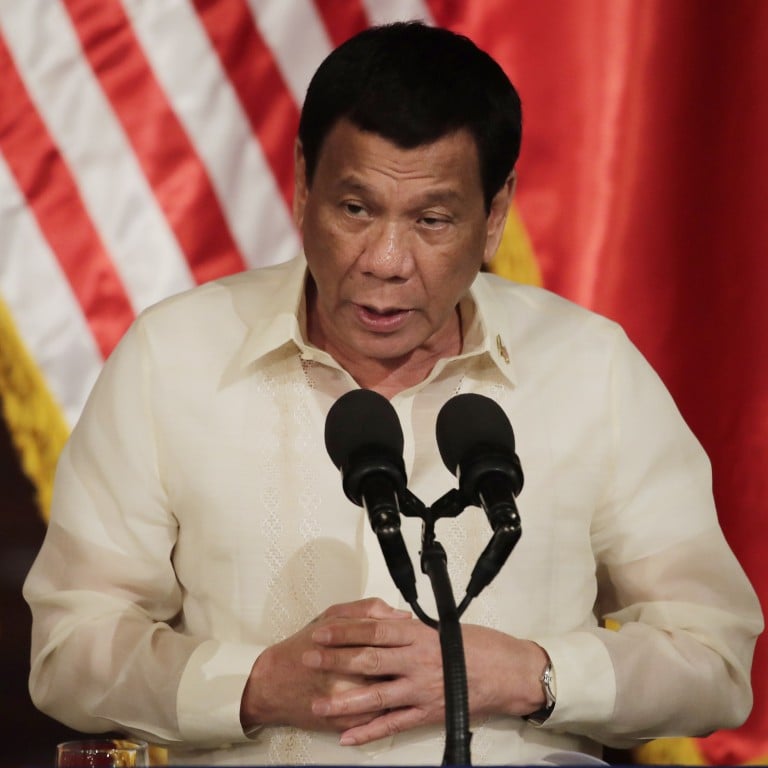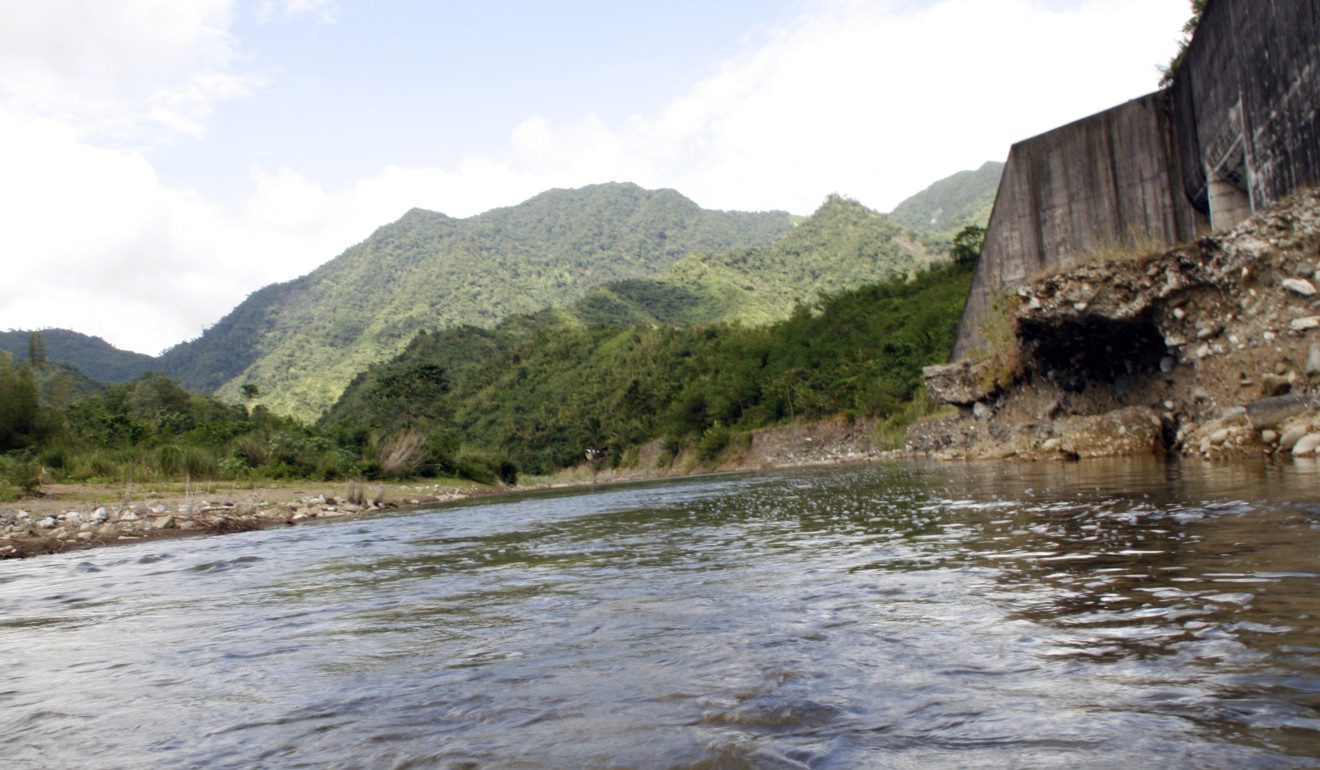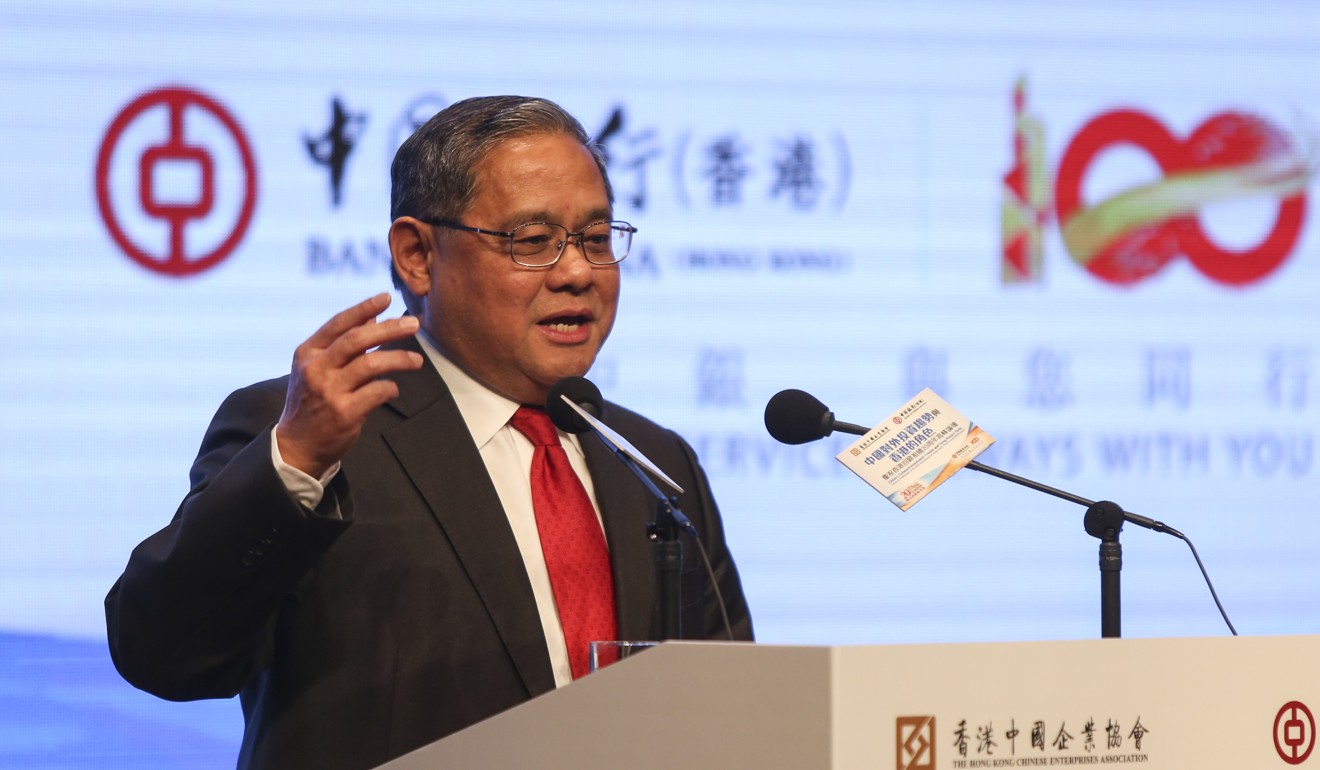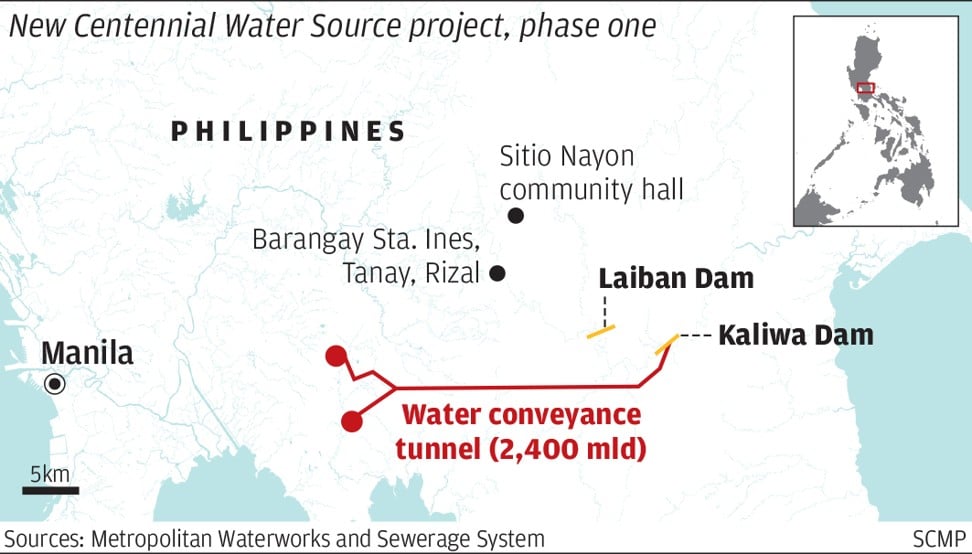
Philippines goes cap in hand to China as water shortage bites
- Delegation from Manila lands in Beijing to seek loans and unlock funds for controversial China-backed Kaliwa dam
- Critics say the Duterte government has engineered the water shortage to gain backing for the dam, which indigenous tribes oppose

The delegation, led by Duterte’s Executive Secretary Salvador Medialdea, will meet Chinese Vice-President Wang Qishan and officials at the Ministry of Commerce, China’s Export-Import Bank and China International Development Cooperation Agency, which reviews foreign aid projects. They will also brief potential investors from the private sector.

The trip comes amid the most severe water shortage to have hit the Philippine capital in the past decade, with dozens of districts having gone days without water. However, it is likely to prove controversial in some quarters, as critics believe the water shortage has been engineered by the Duterte government as a ploy to win support for the long-stalled Chinese-funded Kaliwa Dam Project. The project, which has been shelved for decades, is controversial partly because Duterte asked China to fund it rather than put it to public tender. It is also opposed by indigenous communities, who stand to be displaced, and by NGOs and the Catholic Church, who question its safety.
Opinion | Taho-gate has stained Duterte’s Philippines-China love affair
The task of Medialdea’s delegation will include trying to speed up the delivery of a promised US$211 million loan from the Export-Import Bank to fund the Kaliwa dam.
Finance Secretary Carlos Dominguez said last week the dam was “absolutely” the solution to Manila’s water shortage and defended the conditions of the loan.

He said the bank was giving Manila a preferential rate of 2 per cent per annum for 20 years, with a seven-year grace period; a commitment fee of 0.3 per cent of the loan amount and a management fee of 0.3 per cent of the loan amount.
The delegation will also seek to speed up the delivery of a US$62 million loan pledged by the Export-Import Bank to build the Chico River Pump Irrigation Project in the north of the country.
Dominguez urged the Chinese contractors in both projects to build quickly.
Still, in the Philippines, “quickly” can be a relative term.
China holds the cards as online betting booms in the Philippines
Even as the delegation landed in Beijing, a senate probe into the water crisis was hearing from the Metropolitan Waterworks and Sewerage System (MWSS) administrator Reynaldo Velasco that it would take five years to build the dam, which was still in the consultation stages.
Velasco said that since the dam would be located in the ancestral domain of indigenous communities, “we have to go through a process to be able to get their approval including the agreement [on what displaced families should be paid and their relocation].”
Velasco said if the tribes did not consent, “we will not start the dam”.
Opposition by the tribes has stalled the project for decades.
According to Ramcy Astoveza, chief of the Agta tribe, the tribes will never change their mind because “the dam project is a matter of life and death for us. Once we allow the dam inside our natural habitat, what would follow is the death of our tribe”.
Environmental NGOs including the Save Sierra Madre Network Alliance, Alyansa Laban sa Kaliwa Dam, Task Force Sierra Madre and Tribal Centre for Development have warned that, aside from submerging seven villages, the dam project was “within a zone of two active tectonics – the Philippine Fault Zone and the Valley Fault System”.
The winners and losers in Duterte’s China play
Meanwhile, the Catholic Bishops Conference of the Philippines has warned the dam would endanger 100,000 residents downstream of Kaliwa River, particularly during earthquakes and extreme flooding events brought about by climate change.
As Patrick Ty, chief of the MWSS Regulatory Office, said: “With all the problems Kaliwa Dam is facing, it might get delayed.”
Despite such concerns, the government remains optimistic both projects will go ahead. Velasco said the MWSS hoped to start building the Kaliwa dam by August this year. He denied that Manila’s water shortage was artificial and a ploy to get Metro Manila residents to support the China-funded project.


